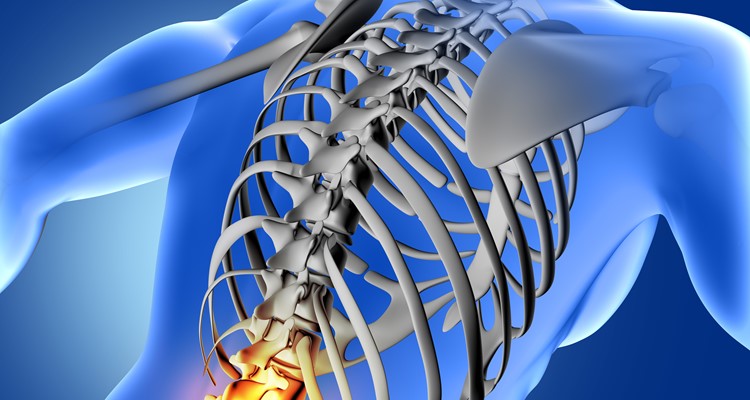Understanding your spine can be an important step in your back and neck pain journey.
 The spine is made up of vertebrae (bones shaped like building blocks), the spinal cord (nerves), fluid, and discs (cushions between the vertebrae). The spine is made of 33 vertebrae that start at the base of your skull and end at your pelvis (hips). The vertebrae have bony knobs on each side and connect to other vertebrae, muscles, and ligaments. When stacked, they form the S-shaped chain that is your spinal column. Your spinal column serves three basic roles:
The spine is made up of vertebrae (bones shaped like building blocks), the spinal cord (nerves), fluid, and discs (cushions between the vertebrae). The spine is made of 33 vertebrae that start at the base of your skull and end at your pelvis (hips). The vertebrae have bony knobs on each side and connect to other vertebrae, muscles, and ligaments. When stacked, they form the S-shaped chain that is your spinal column. Your spinal column serves three basic roles:
- PROTECTS your spinal cord and nerve branches.
- SUPPORTS your body.
- ENABLES movement of your body (twisting, bending, running or jumping).
There are 24 individual vertebrae from your neck to your low back that move:
- Cervical: Located in your neck, these seven are the lightest and smallest of your vertebrae. They support the weight of your head and give your neck the ability to move. Your cervical vertebrae have a slight inward curve (lordosis). They are numbered C1 to C7.
- Thoracic: Located in your mid-back, these 12 vertebrae are larger than the cervical vertebrae. They support the weight of your chest and upper body. Your ribs connect to your thoracic vertebrae. The thoracic vertebrae have a slight outward curve (kyphosis). They are numbered T1 to T12.
- Lumbar: Located in your low back, these five are the largest of your vertebrae. They support most of your body weight and the stress of your spinal column. Your lumbar vertebrae have a slight inward curve (lordosis). They are numbered L1 to L5.
There are nine fused (joined) vertebrae that do not move:
- Sacrum: These five fused bones are located between your hips.
- Coccyx: These four fused bones are located at the end of your spinal column. They form your tailbone.
The vertebrae are connected by facet joints located on both sides, and on the top and bottom of each vertebra. The joints allow the vertebrae to move. A special fluid (synovial) helps lubricate the facet joints so they move with ease.
Discs are thick pads of cartilage (soft tissue) between the bones that let the bones move and provide a shock absorbing cushion when you move. At birth, the water content of a disc is about 90 percent. Over time, the water decreases and by age 50, it is about 70 percent.
Your spinal cord contains nerve bundles that carry messages to and from your brain. You also have 31 pairs of nerves that branch out from your spinal cord. The roots of those nerves leave your spinal column through vertebral holes (foramen) and branch out to the body. The nerves provide sensation to your spine’s discs, muscles, and joints.
Ligaments are stretchy bands of tissue that support your spine by keeping the vertebrae from slipping out of place and protecting your discs. Ligaments help keep your back in a natural alignment.
Muscles help keep your back strong. By exercising your back and abdominal muscles, you will be able to move and keep your spine in its natural position. When back muscles are not strong, they can spasm (contract or become smaller).
We Can Help
For more information, be sure to visit our Resources section or Contact us.


